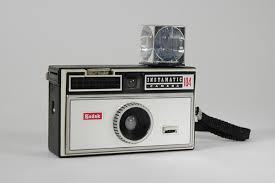Don't wanna be here? Send us removal request.
Text
Week 15- Final Thoughts
After 15 weeks of talking about design, I envision the future of design as being more imaginative and continuing to adapt and shape to the requirements of consumers. As time passes, new products are released or design(s) evolve, the future of design continues to expand. Like iPhones, their design evolves through time, and comparing the first generation to the most recent shows how much the design has progressed. Because design has such a large influence on society, I'd expect it to be more active with its community. As I previously stated, design continues to mould to the requirements of consumers. That is, producing less waste while constructing anything in order to create a safer and healthier environment. I can see it as a possible future path for design, since many goods have already chosen this route of recycling old materials and incorporating them into new things. For instance, Nike sneakers. They just released Air Force 1s built from recyclable materials. Sleek, comfy, and environmentally friendly. One way I can see design becoming more ecologically friendly is in this way. Another way I view design and its future is to give back to the community by developing more products that the community requires. This might also mean incorporating environmentally friendly components into the design while providing community service. I used clothing as an example, but I believe that design can help the community by creating more buildings in parks and communities that benefit the people who live there. Instead of mass-producing things, I see design giving back time and time again, emphasizing the need of avoiding utilizing dangerous materials that deplete resources and harm the environment. I've seen a few firms take this approach, and it's fascinating to see how they can repurpose scrap materials into useful items.
0 notes
Text
Week 14- Your Choice
Everything I look at now that my awareness of design and art has grown, reminds me of things I learnt in class. Consider the factors that surround me. I could take a trip outside or just sit at a table and observe the value and contrast of the objects around me. In architecture, I notice older structures and wonder what period they belong to; gothic, for example. I've found that I'm paying more attention to what's going on around me and pulling information from class that relates to it. The vapor wave period is something I still kind of see now, maybe in a different way, but I recall how things evolve through time or get updated to match the aesthetic of people and what they prefer to see, like we discussed lately when we spoke about new media. So whenever an app is updated or has minor changes made to it, such as the layout, I start thinking about class material. The same may be said about typography. I'm reading a book, looking at signs around me, or simply looking at the font on a hat, and I know it's a specific typeface. It's fantastic to be able to apply what I've learnt in class to the actual world. It puts me in the moment to appreciate what's around me, and learning how and why things came to be is actually quite fascinating. At the same time, I find it amusing that I can be looking at a sign and my brain instantaneously knows the typeface or lecture from which I learned it. It's cool to be able to discern the difference between those things, and I find myself telling people that this building belongs in this category or that this building belongs in that category.
0 notes
Text
Week 13- New Media
On a visual level, digital aesthetics is frequently associated with the pixel and any pixelated structure. While the pixel looks to be a viable, adaptable metaphor for »the digital« at first sight, a cursory examination reveals a few additional options, which I'll sketch out below.
When discussing the digital, the term "digital aesthetics" refers to objects generated using a computer, limiting the digital domain to electronic computers. The digital concept distinguishes the digitized, recognizable, separable, discrete, and calculable from the analogue concept, which is continuous and varies with time. In contrast to analogue continuity, digital is a series of discrete components.
From the aesthetics of the physical (digital) item, such as the flat screen television and the iPod, to the aesthetics of the content on the digital object, such as the webpage, television show, or cartoon graphics, it should be emphasized that digital aesthetics may take various forms.
The aesthetic of games, like that of games, attracts a diverse range of players. They employ a variety of techniques to appeal to various audiences. The look of the game is what makes or destroys it. They preserve the same characters as the Mortal Combat games, but they tweak the appearance of some characters over time to make them more appealing to the gamer. The whole vapor wave era/ style is a modern illustration of digital aesthetic. Because it occurred during my middle school/freshman year of high school, I recall this period well. Everyone was into the vapor wave aesthetic, which spanned everything from internet platforms to apparel and fashion.
0 notes
Text
Week 12- New Media
In our daily lives and at work, we utilize digital media and technology extensively. This programme allows to work on the design of interactive digital technologies as well as human-computer interaction mediated by technology. For example, create interactive concepts for corporations and organizations. Look at how digital technology and digital media are transforming our society, as well as analyze digital form and content.
Interactive design is a crucial component of the programme, and it focuses on how to design technology, not only the technology itself, but how it is used in human interaction and in various disciplines. Interaction design is thus concerned with creating digital technologies and services that are as efficient as possible while still offering a pleasant user experience, whether in a professional or everyday environment.
Over the years, design and interactive design has evolved and have brought new ideas to society showing how quickly it can change. To this day new media is constantly evolving and changing and bringing new ideas and innovations to the table. Animation and ads are some examples of how new ideas have impacted the public. Macromedia Flash helped with animation and ads and helped with motion graphics. If you were an animator, websites like “Newgrounds” was an element used to make memes which is something I found to have an impact on interactive design, because memes are a big staple in the internet and internet culture. They’ve evolved from troll memes to more modern memes that sometimes only a select few find funny. Another thing that I thought to have a big impact on interactive.
0 notes
Text
Week 11- Graphic Design
Citizen Designers are those who are engaged in a process attentive to the social context un which the live design; interested in the impact of its products on the environment and material culture; determined to expand the fundamental rights of its members, for the common good and honesty.
At present design specializations are many that go beyond traditional categories. Not only graphics, industrial, textiles, information designers and architects or as Nigel Whiteley says: “formalized designers, theorists, politicized, consumerism, technology, recovered”, but today designers-authors, designers- producers, designers-activists, designers-entrepreneurs, designers-curators, designers integral, designers-artists, designers-partners are formed. Their theoretical and methodological approaches ranging from “socially responsible” design, sustainable, eco-design, “user-centered”, universal, “slow design”, and so on, to the design for luxury, extravagance or profit.
Citizen designers take design to new heights by combining art and many elements of design with problem solving. This is what gives them such societal significance. Designers, I feel, are able to become some of the best critical thinkers and problem solvers because of their creativity. Bruce Mau is a citizen designer who focuses on sustainability, which helps with concerns such as climate change by using fewer toxic materials and lasting longer to decrease waste. In the 1970s, citizen designers even sought to treat and prevent AIDS, which was on the increase at the time.
0 notes
Text
Week 10- Graphic Design
A few ideas that I liked from my readings are:
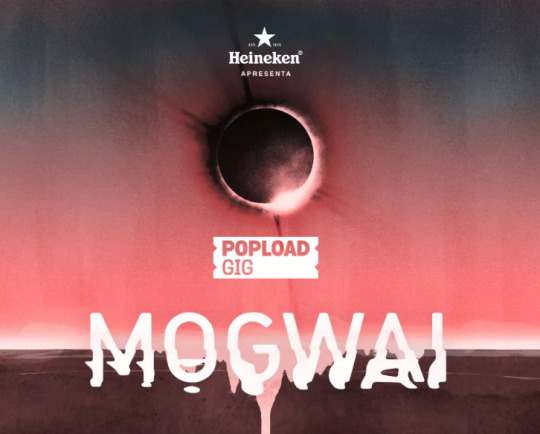
Mogwai is a relatively well-known band that made it onto best album artwork list. They're known for their artistic output, so it’s not surprising to find them here. Designed by Afonso de Lima, the water-inspired typography is an innovative, playful way to promote the gig, making for a unique yet attractive typography poster.

A poster campaign for a charity needs to be eye-catching, but it also needs to send a strong message of the charity’s aims. These powerful typography-led posters for the Dutch Alzheimer Foundation were created by Studio Dumbar and provide a striking, heartbreaking visual of what Alzheimer's disease can do to the brain. The disease often causes small brain lesions and this is transported to the typography design, with spots causing the type to become less clear. It’s a powerful choice.
0 notes
Text
Week 9- Industrial Design
Milwaukee is a progressive area and nice it is a city it is a main foundation for surrounding areas to be its main provider. There is mass production like factories and popular industries the produce products of design that we use for every day purposes.
One of Stevens’ most recognizable creations is the Oscar Mayer Wienermobile. He always said that he stayed in Milwaukee because that's where the business was, and it was true. Unlike the many designers in New York, Stevens had the advantage of proximity to a wealth of manufacturers.
0 notes
Text
Week 7- Architecture
Equitable usage in design refers to a design that was created with the intention of including everyone. In a retailer like Walmart or Target, a sliding door is an example of fair usage. It allows customers pulling shopping carts to enter and exit the store without having to stop and open the door, as well as persons in wheelchairs to enter and exit the store with ease. Ramps in a house or a shop are another example. Customers with wheelchairs and those who have purchased items such as televisions or furniture that need to be taken out through a ramp benefit from store ramps. Alternatively, I've seen buildings with ramps with bike chains on the sides, allowing bikers easy access and a place to keep their bikes while they walk inside. There are also chairs built specifically for the disabled. For example, if there are a row of seats, but the final seat has an opening, the user will be able to transition from their wheelchair to their allocated seat with ease, and will also have space to keep their wheelchair next to them. The design requires minimal to no physical effort to implement.
Things like twisting a faucet knob to contemporary faucets that turn on when you tap on them. Touchless hand sanitizer dispensers are another example of minimal physical effort innovations. You simply place your hand beneath the dispenser, and a motion detector administers the appropriate quantity of product to you as you go about your business. Electrical razors are one last example of little physical effort in design that comes to mind. Instead of using traditional razors to shave, electrical razors save time and get the job done just as well. It also reduces the fatigue of keeping your arm raised for an extended period of time, and the outcomes are sometimes even better.
0 notes
Text
Week 5- History of Design
This is a teapot. There was nothing wrong with the traditional teapot at all. It worked fine and there was no need to design a more efficient teapot. This design, as simple it may appear, contains a number of components. Such a design incorporates texture, substance, and form. The place where the water is placed to boil is the first item that attracts my sight. It appears to be extremely clean and beautiful in a glass container in the middle. We can also watch our water levels and when the water boils. Straight lines provide the impression of something sleek and smooth in this area of the design. Straight edges, on the other hand, frequently conjure up images of severe boundaries. A stainless steel handle and body are included to balance things out. The gleaming metal enhances the smooth appearance of the design, while the curves soften any concerns about sharp edges.
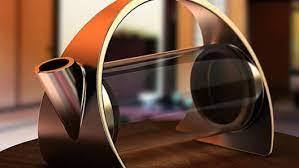
Nanna Ditzel, a Danish designer, was inspired by butterflies for her 1990 chair, which was made of two-millimeter-thick folded fiberboard and supported by six insect-like legs.
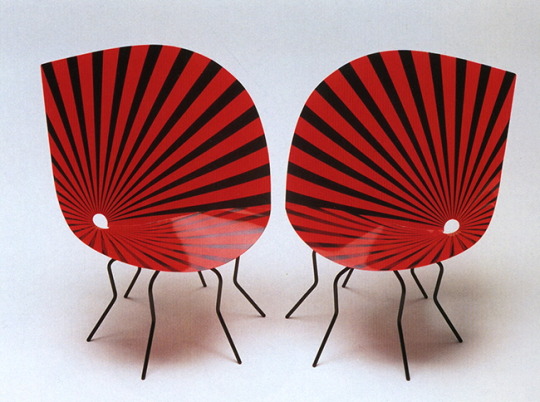
The Dondola is a rocking chair designed by Pucci de Rossi that blends clean lines and curvy curves. It's a lovely item that exemplifies Made's passion for Italian craftsmanship. The stainless steel frame is made up of two circular arms that are connected by three book storage boxes.
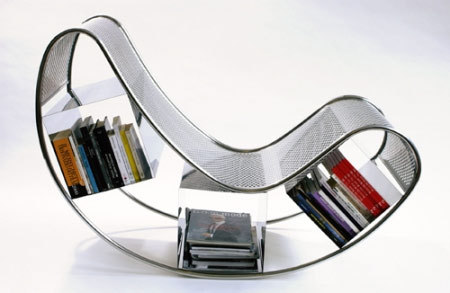
References:
Snapshot Designer. (2010, November 1). Retrieved from http://snapshot-designer.blogspot.com/2010/11/everyday-design.html
Unsuals objects. (2019, March). Retrieved from Home Designing: http://www.home-designing.com/2008/09/uncommon-bookshelves
Veit, R. (2015, December 25). 10 Brilliant and Beautiful Objects From Our ‘Designing Women’ Series. Retrieved from Core77: https://www.core77.com/posts/44396/10-Brilliant-and-Beautiful-Objects-From-Our-%E2%80%98Designing-Women-Series
0 notes
Text
Week 4 - Found Objects
For my walk I decided to take a stroll through my neighborhood. For about an hour I caught glimpses of things that I thought posses an element of design. I found many objects that caught my attention but the one that I found most pleasing was a spray bottle. A man was spraying water on his plants. The mechanism of a spray bottle is a brilliant little piece of one-way valve work. When the trigger goes out, the motion moves air into the bottle and pulls water up through the straw that goes down to the bottom of the bottle and into a chamber. When the trigger is squeezed, that action forces the water out of the same chamber, but routes it through a different valve, which sends it out the bottle's nozzle to hit the plants.
Another object i found interesting was a wire stripper. Some wire strippers are simpler devices with hardly any moving parts, but automatic wire stripper like that make the process super easy. As he squeezed down on the pliers, the left side grips onto the wire while the right side cuts in just slightly, through the plastic but not into the metal inside. Squeeze down more and the left side pulls the still-coated wire left, while the right side pulls the severed housing off.
0 notes
Text
Week 3- History of Design
The history of design includes a clock, candle, mirror etc. A clock is a unique invention that only vibrates at a particular frequency and what I wonder is how a clock oscillates a pendulum every time the arms of the clock complete their one round of one hour. An Eiffel tower shows the creation of human kind that how a gigantic building stands on earth with such powerful and distinctive symbolization. A candle in lighten a place with only a thread and wax.





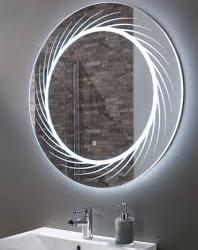



0 notes
Text
Week 2: Design Thinking
Design Thinking is a problem-solving method that employs a solution-based approach. To successfully solve the Design challenge, you must first investigate the issues and then find constructive solutions. The user-centered Design Thinking methodology prioritizes humans and attempts to understand user requirements before proposing effective solutions to fulfil those needs.
Netflix started in 1997 with creator Reed Hasting's concept of streaming movies straight to people's homes through the internet. Netflix began as a business that delivered movies to consumers' doorsteps via the mail back in the day. Cable providers, on the other hand, quickly began to offer movies on demand. Netflix began producing original movies and programs in 2011, and the entertainment world was forever altered. Customers demanded better and more controversial material, so series like Stranger Things, Black Mirror, and Orange is the New Black were shows that were much too provocative for primetime networks but were consumed by viewers.
Netflix redesigned their first layout in 2016 to catch customers' attention from the moment they arrived on the site. Instead of still photos or series posters, they introduced trailers that start playing as soon as the client begins scrolling. Netflix utilized Design Thinking to better understand its consumers' wants and expectations, resulting in a new business model and now Netflix has over 117 million subscribers in 190 countries.
Netflix also used artificial intelligence and predictive analytics to tailor each viewer's experience depending on their viewing habits: "Because you viewed..." It not only changed Netflix's client experience, but it also changed customer expectations for all other entertainment companies.
All of these breakthroughs came about as a result of Netflix's repeated use of design thinking to empathize with its consumers, and the realization that the only way to stay relevant was to stay anchored in exactly what each and every customer wanted to experience when using the service.
The most important concept form this reading is that design thinking is a process that is driven by a team not an individual. A group of individuals frame their questions, gather inspiration, generate ideas, make ideas tangible, test to learn, and share their stories which is not possible by an individual.
(Reading source: Harvard Business Review, June 2008, hbr.org)
0 notes
Text
About Me
Hello my name is Khalifa K Mubarak studying in UWM. I am basically from Qatar. I love to travel because not only is it the ultimate adventure but it also exposes you to new types of people, different ways of living, and opens up your mind. I use travel as an escape from daily life. Having future trips already planned brings me joy and gives me something to look forward to. I've never regretted a single trip I've taken.
I am taking this course because I've always had a interest in design also, I am keen in learning new creative and design elements. I have selected art over other elective course because art is interesting and I want to learn new techniques about design.
1 note
·
View note









